Stretch marks are one of those pesky but perfectly normal, pregnancy side effects that touch approximately 2 in 5 women – particularly during their first pregnancy.
Stretch marks develop when the skin is pulled or stretched rapidly or “excessively”. Other than the obvious tummy region, stretch marks can also occur around your boobs, bum and thighs.
Although the skin is normally quite elastic, when it is overstretched, the production of collagen (the protein that gives the skin its elasticity and strength) is disturbed and scarring can occur.
While pregnancy stretch marks do not pose any health risks, they are a bit of an unsightly nuisance. The challenge is that they are incredibly difficult to treat (get rid of).
There is however a number of things you can try to reduce the appearance of stretch marks and if you’re still in the early stages of your pregnancy, potentially prevent them altogether!
Here are 5 tips to help prevent pregnancy stretch marks:
1. Exercise
You’re no doubt well aware of the strength and cardiovascular benefits of exercise during pregnancy but did you know exercise also contributes to healthy skin?
Exercise gets the blood pumping – nourishing your body’s cells with oxygen and nutrients and flushing out the nasty toxins. Healthy skin is far more capable of retaining its elasticity and is, therefore, better equipped to accommodate your growing body parts!
Exercise can also help prevent you from gaining too much weight, too quickly. If you haven’t been previously active get the go-ahead from your doctor first, then start with something simple like walking. As your fitness builds try and engage in 20 minutes of moderate-intensity exercise 3-5 days a week.
Check your local gym, Pilates or yoga studio for pregnancy appropriate classes, or you can also participate in our Prenatal Exercise video and exercise in the comfort of your own home.
2. Drink Water
Your body is made up of a number of different elements, about 60% of which is water. Adequate water intake helps maintain a healthy fluid balance in your body.
This is required to support important functions including circulation (blood flow) and the transportation of nutrients and waste products in and out of the cells. Dehydrated skin, not surprisingly, looks dry and wrinkled and as such is going to have a tough time coping with stretching!
If you’re pregnant (or breastfeeding) you need even more water than the average woman. You should be trying to drink around 2-3 litres of fluid a day. Water is best, however, water-rich fruits and vegetables and broth-based soups all contribute to your daily fluid intake.
Wellness educator Meg Campbell warns, it’s easy to fall into the trap of drinking less water than we need to avoid frequent visits to the toilet and some people believe that drinking too much can cause fluid retention.
Rest assured, this is not the case. In fact, inadequate water intake can be the cause of fluid retention – it's the body's way of holding on to the little water it is getting.
3. Eat For Your Skin
There is truth in the saying “you are what you eat” and the appearance of our skin is usually a good indication of what’s going in.
Nourish midwife Caroline explains, good eating habits promote overall general health and give you adequate stores of essential nutrients, vitamins and minerals to support your pregnancy and your growing baby, which is particularly significant in the first 12 weeks of pregnancy.
A healthy pregnancy diet is also vital for normal organ development and function, energy and immunity.
General mum and bub health aside, if you can include in your diet foods that contain nutrients that directly affect the health of your skin, you’re one step closer to preventing the occurrence of pregnancy stretch marks.
These wonder nutrients work together to nourish, protect and repair the skin cells and include:
- Omega-3 fatty acids found in fish, nuts and eggs
- Vitamin E found in spinach, nuts, avocados and olive oil
- Vitamin A found in sweet potatoes, carrots, dark leafy greens and red peppers
- Anti-oxidant rich foods such as berries, broccoli, garlic and tomatoes
4. Exfoliate
Exfoliating your skin, improves circulation, speeds up the skin’s natural renewal process and can even help your moisturiser penetrate deeper into the skin. Exfoliating with a brush or gentle exfoliating cream may help prevent and minimise the appearance of pregnancy stretch marks.
5. Moisturise & Protect
Moisturising your expanding belly and associated body parts helps keep your skin hydrated, pliable and less resistant to stretching. Deeply hydrating moisturisers, body butters and natural oils also help protect the skin from water loss and associated dryness.
Opt for a specialty pregnancy product (or range). Their products are formulated with the specific needs of mums-to-be in mind and tend to do a better job of addressing the unique changes to your body during pregnancy, than your average budget moisturiser.
Where possible, it’s also important to avoid lengthy exposure to the sun or at the very least make sure you use a quality sunscreen. Sun exposure damages the skin and precious collagen, resulting in dryness, loss of elasticity and you guessed it, the appearance of fine lines, wrinkles and stretch marks!
About the Author: Jane Barry - Your Health Content Expert
Jane Barry is a registered nurse, midwife, and child health nurse with a passion for combining clinical expertise and writing. She has nearly 30 years of specialist experience in child health nursing and holds a Bachelor's Degree in Applied Science (Nursing). Jane specialises in women’s health, parenting, pregnancy, babies and maternity care, child health, nutrition, feeding, teething, and dental health issues.
An active member of AHPRA, The Australasian Medical Writer’s Association, Health Writer Hub, and the Australian College of Children and Young People’s Nurses, Jane Barry delivers health content with professionalism and clarity.
Our Products
-
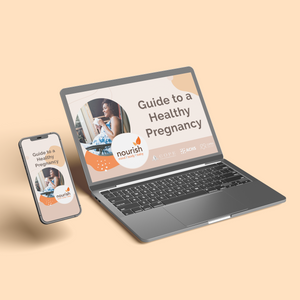
01. Guide to a Healthy Pregnancy
$55 -
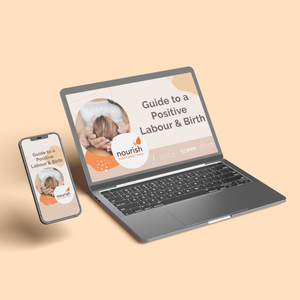
02. Positive Birthing Course
$55 -
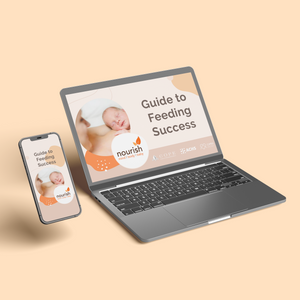
03. Infant Feeding Guide
$55 -
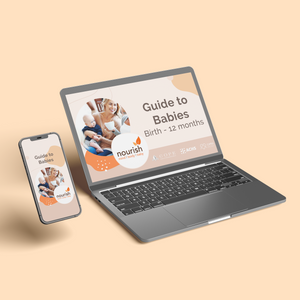
04. Baby Sleep Guide - First 12 Months
$55 -
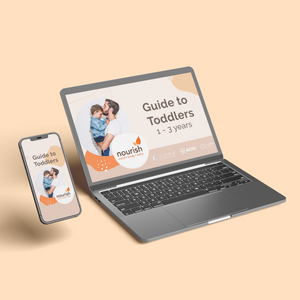
05. Toddler Parenting Course 1 - 3 Years
$55
-
 When to Start Antenatal Classes?
When to Start Antenatal Classes?
Becoming a parent is an incredible milestone, but it comes with a host of changes that can be daunting, especially for first time parents. Antenatal classes are all about offering expectant parents the education they need to make informed decisions, look after their bodies and care for their newborn babies. While you probably already have a long list of things you need to accomplish during your pregnancy, it’s a good idea to make time to attend antenatal classes.
-
 Development Milestones 4-8 Months
Development Milestones 4-8 Months
As they reach the middle of their first year, you'll start to see bigger leaps in their growth and ability!
In this article, we’re going to discuss your baby’s developmental milestones between 4-8 months, and what you can expect along the way.






 When to Start Antenatal Classes?
When to Start Antenatal Classes?
 Development Milestones 4-8 Months
Development Milestones 4-8 Months








